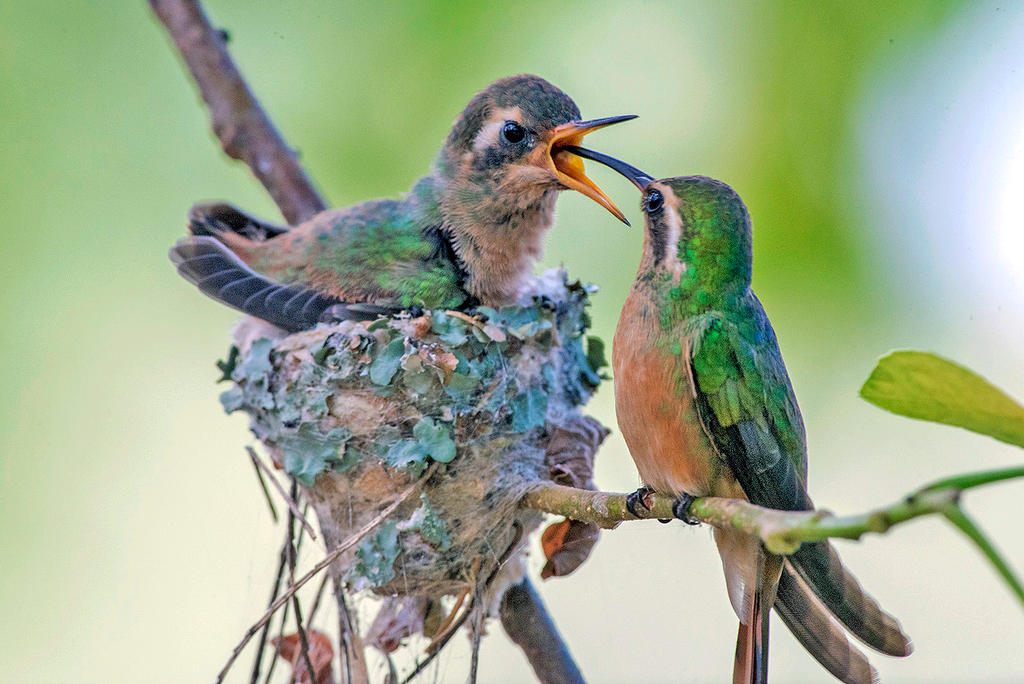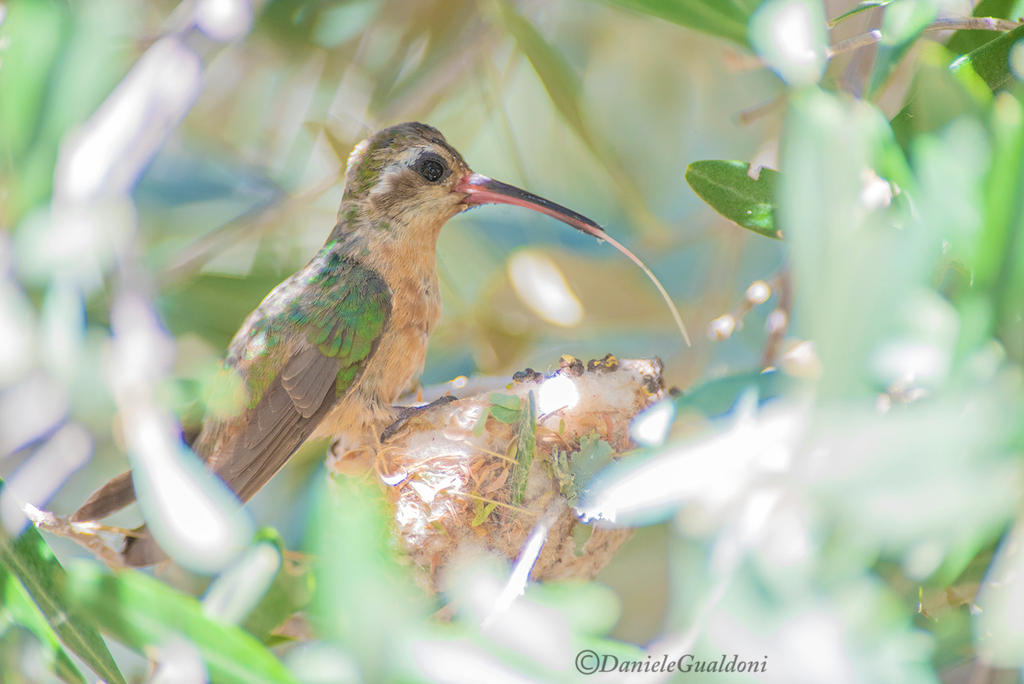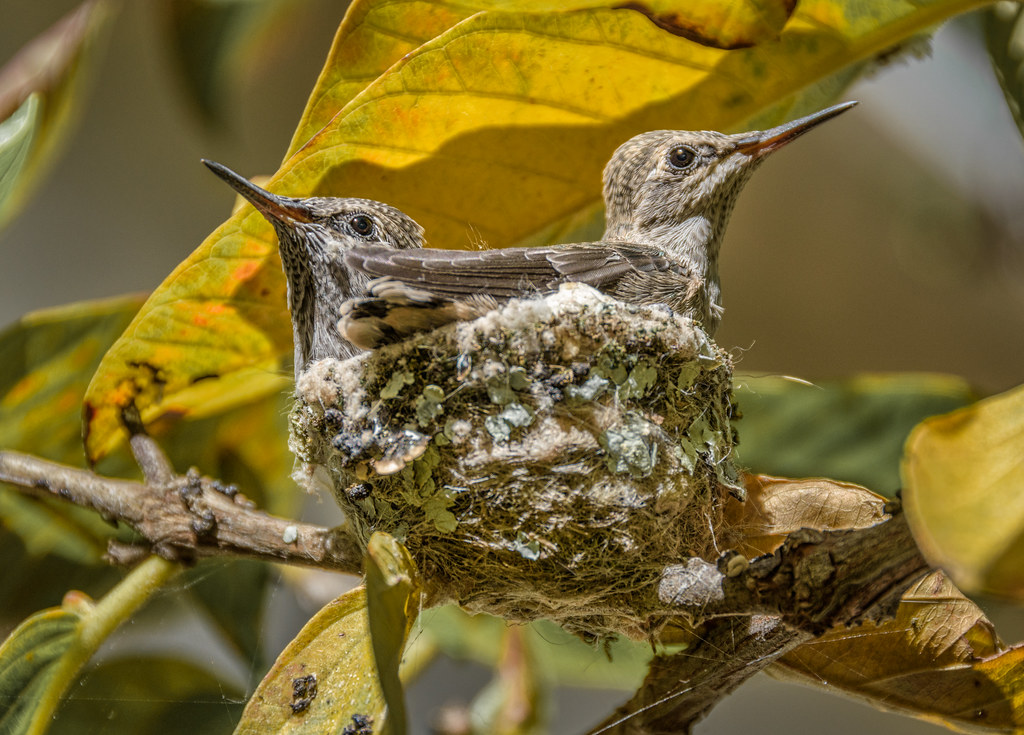Explore the world of hummingbird nests: construction, materials, and tips for a hummingbird-friendly garden. Your go-to guide for all things hummingbird nesting.
Overview of Hummingbird Nests
Hummingbird nests, and exquisite creations of nature, offer a captivating glimpse into the avian world’s architectural wonders. These tiny marvels are meticulously crafted by female hummingbirds using the finest plant fibers and delicate spiderwebs. The process involves a delicate dance, resulting in a secure and intricate structure that serves as a temporary home for the upcoming generation.
The Craftsmanship Unveiled
Hummingbirds embark on an artistic endeavor, combining thistle or dandelion down, spider silk, and sometimes pine resin to construct a nest that measures a mere 2 inches across and 1 inch deep. The inner cup, comparable in size to a large thimble, showcases the precision and attention to detail exhibited by these skilled architects of the avian world.
The Unique Construction Materials
The choice of construction materials is as fascinating as the nest itself. Plant fibers provide a sturdy foundation, while spider silk adds flexibility and strength. The incorporation of pine resin enhances the nest’s durability, showcasing the resourcefulness and adaptability of these incredible creatures.

Significance of Understanding Hummingbird Nests
Understanding the intricacies of humming bird nest construction goes beyond mere admiration. Bird enthusiasts and researchers find value in gaining insights into these nesting behaviors. The significance extends to the broader realm of conservation efforts, as knowledge about nesting habits aids in creating environments that support and sustain hummingbird populations.
As we delve into the enchanting world of hummingbird nests, we unravel not just the secrets of their construction but also the interconnectedness between these tiny marvels and the larger ecosystem they inhabit. Stay tuned for further exploration into the notable characteristics and the preferred nesting locations of these feathered architects.
Crafting a Tiny Marvel
In the intricate world of hummingbirds, the process of nest construction emerges as a true testament to avian craftsmanship. Female hummingbirds, the architects behind these tiny marvels, embark on a delicate dance of creation, utilizing plant fibers and spiderwebs with unparalleled precision.
A Symphony of Fibers and Webs
The construction process involves a meticulous interweaving of plant fibers, providing a sturdy foundation for the nest. Spider silk, known for its strength and flexibility, adds a touch of finesse to the structure. This combination results in a nest that is not only resilient but also exquisitely crafted.
Unveiling the Dimensions
Delving into the structural details, a typical hummingbird nest measures approximately 2 inches across and 1 inch deep. This seemingly diminutive size belies the complexity of its construction. The inner cup, akin to the size of a large thimble, showcases the hummingbird’s attention to detail and architectural finesse.
Materials of Choice
- Thistle or dandelion down Adding softness to the nest.
- Spider silk: Providing strength and flexibility.
- Pine resin: Enhancing durability and weather resistance.
A Glimpse into Precision
The meticulous selection and arrangement of materials highlight the hummingbird’s ability to create a secure and intricate structure. The thistle or dandelion down contributes to the soft lining, ensuring the comfort of the future inhabitants.
As we unravel the marvel of hummingbird nest construction, the next chapters will venture into the notable characteristics of these nests, exploring their size, unique features, and the factors influencing their preferred nesting locations. Join us in this journey through the fascinating world of hummingbird nests.
Sought-After Sanctuaries: Preferred Nesting Locations
In the enchanting world of hummingbirds, the choice of nesting location is a meticulous decision that significantly shapes the survival and thriving of their tiny offspring. Understanding the nuances of these preferred nesting spots offers a glimpse into the birds’ instinctual behaviors and adaptability.
The Varied Tapestry of Nesting Places
Hummingbirds exhibit a remarkable diversity in their selection of nesting locations. From the towering branches of deciduous trees to the sheltered nooks in shrubbery, these birds showcase a keen eye for secure and concealed spots. Exploring the varied tapestry of nesting places unveils the intricacies of their habitat choices.
Elevations and Heights
- Delve into the heights at which hummingbirds prefer to build their nests.
- Discuss the correlation between elevation and environmental factors.
Surroundings Matter
- Explore the influence of the surroundings on nesting site selection.
- Discuss the role of foliage density and proximity to water sources.
The Artistry of Construction Techniques
Hummingbirds employ unique construction techniques that align with their preferred nesting locations. Whether nestled on a horizontal branch or ingeniously attached to the undersides of leaves, the methods showcase adaptability and resourcefulness.
Branch-Direct Nesting
- Explore the methods employed by hummingbirds in building nests directly on branches.
- Discuss the advantages of such locations in terms of stability and visibility.
Inner Cup Precision
- Highlight the significance of the inner cup being the size of a large thimble.
- Discuss how this precision contributes to the safety and protection of the hummingbird chicks.
As we unravel the secrets behind these sought-after nesting locations and delve into the construction techniques, the next chapters will guide us through the duration of nesting, the fledging process, and the fascinating life after nesting. Join us on this exploration of hummingbird nesting habits, where nature’s intricacies unfold in every carefully chosen location and delicately woven nest.

Time’s Tapestry: Nesting Duration and Beyond
Embarking on the intricacies of hummingbird nesting habits, we unravel the temporal tapestry woven by these remarkable birds during their nesting phase. From the meticulous construction to the fledging process, each stage is a testament to the precision and adaptability ingrained in their behavior.
Nesting Duration Unveiled
Delve into the time frame that encapsulates the creation of hummingbird nests. Spanning from 6 to 10 days, this period is marked by an astonishing display of avian architecture. Explore the factors influencing this duration and the meticulous attention hummingbirds invest in crafting their nests.
The Art of Delicate Construction
- Uncover the details of the hummingbird’s architectural prowess during the nesting phase.
- Discuss the role of plant fibers, spider silk, and other materials in nest creation.
Fledging: Wings Ready for Flight
- Explore the fledging process, where hummingbirds leave the nest equipped for flight.
- Discuss the remarkable transformation from nest-bound chicks to agile, airborne creatures.
Life Beyond the Nest
The conclusion of nesting marks the beginning of a fascinating chapter in the lives of hummingbirds. Within a month after hatching, these tiny aviators achieve independence, preparing for their migratory journey. Uncover the intricacies of this post-nesting period, showcasing the resilience and adaptability of these remarkable creatures.
Swift Independence
- Explore the independence achieved by hummingbirds within a month after hatching.
- Discuss the behavioral and physical changes marking this transition.
Readiness for Migration
- Delve into the preparedness of migratory hummingbirds for their inaugural journey.
- Discuss the pivotal role this early independence plays in their survival.
As we navigate the temporal dimensions of hummingbird nesting, the following chapters will delve into the mysteries of hummingbird eggs, the rarity of spotting nests, and the joy of encountering these marvels in gardens. Join us in this journey through time and transformation in the world of hummingbirds, where every nest is a masterpiece, and every fledgling, is a testament to the marvels of nature.
Unveiling Hummingbird Mysteries
Embark on a journey to unravel the enigmatic world of hummingbird nests as we delve into frequently asked questions, demystifying the secrets of these tiny avian wonders.
What do Hummingbird Eggs Look Like?
Hummingbird eggs, like nature’s precious gems, exhibit a stunning array of colors and patterns. Explore the intricacies of their appearance and understand how the unique markings contribute to their significance in the avian realm.
How Rare is it to See a Hummingbird Nest?
Dive into the rarity of stumbling upon a hummingbird nest in the wild. Understand the elusive nature of these nests and the contributing factors that make the observation of such a spectacle a truly extraordinary experience.
How Long Do Hummingbird Babies Stay in the Nest?
Witness the ephemeral phase of hummingbird chicks in their nests. Gain insights into the duration of their stay, from hatching to fledging, and marvel at the rapid growth and development during this critical period.
What Does a Hummingbird Nest Look Like?
Embark on a visual journey to understand the unique characteristics that define a hummingbird nest. From size to structure, discover the architectural marvels that these petite birds create for their offspring.
How to Find a Hummingbird Nest?
Equip yourself with practical tips for spotting hummingbird nests in their natural habitats. From observational techniques to understanding nesting preferences, uncover the secrets to becoming a hummingbird nest detective.
As we lift the veil on these hummingbird mysteries, the following chapters will guide you through creating a hummingbird-friendly environment, DIY tips for nest building, and the wonders of encountering hummingbird nests in gardens. Join us in the exploration of these captivating creatures and their nests, where every revelation adds to the marvel of understanding and appreciating the delicate world of hummingbirds.
Enchanting Your Space for Hummingbirds
In the pursuit of attracting these agile aviators to your yard, creating an optimal environment is key. Follow these insightful guidelines to transform your space into a haven for hummingbirds, fostering their presence with care and consideration.
Crafting a Hummingbird-Friendly Environment
Hummingbirds are drawn to specific elements in their surroundings. Enhance your yard with these features to make it irresistible to these delicate creatures:
- Colorful Blooms: Opt for vibrant, nectar-rich flowers that hummingbirds find appealing. Red, pink, and orange hues are particularly attractive to them.
- Strategic Plant Placement: Arrange flowers and shrubs in clusters to create natural cover and resting spots. This mimics their natural habitats and provides safe spaces for observation.
- Continuous Bloom Cycle: Choose plants that bloom at different times of the year, ensuring a steady supply of nectar. This sustains the hummingbird population throughout the seasons.
Do-It-Yourself (DIY) Tips for Nest Building
While providing a welcoming environment, consider encouraging nesting activities. Here are DIY tips to facilitate nest building:
- Material Stations: Set up stations with hummingbird-friendly nesting materials such as soft cotton, twigs, and natural fibers. Hummingbirds may use these materials for constructing their nests.
- Safe Perching Spots: Install small, stable perches in strategic locations. These perches serve as observation points and potential nest sites.
- Water Features: Hummingbirds enjoy water sources for bathing and drinking. A small, shallow birdbath with fresh water can attract them to your yard.
By integrating these elements into your outdoor space, you not only attract hummingbirds but also contribute to their well-being. This chapter sets the stage for the upcoming exploration into encountering hummingbird nests in garden settings. As you embark on this journey, remember that a thoughtful and harmonious approach to your surroundings will enchant both you and these delightful creatures.

Nurturing Hummingbird Harmony in Gardens
Embark on a journey through the captivating world of hummingbird nests nestled within the lush confines of gardens. This chapter explores the unique dynamics of spotting and fostering these delicate marvels in your own outdoor sanctuary.
Seeking Hummingbird Nests in Gardens
Gardens serve as enchanting stages for the intricate ballet of hummingbird life. Delight in the following insights to maximize your chances of encountering these mesmerizing nests:
- Strategic Plant Selection: Choose a variety of nectar-rich plants to entice hummingbirds. Native flowers and shrubs often appeal to these avian architects.
- Camouflage Mastery: Hummingbirds are masters of disguise. Their nests often blend seamlessly with foliage. Observe areas with dense vegetation, especially near preferred feeding spots.
- Subtle Observation Techniques: Patience is paramount. Position yourself inconspicuously, allowing the hummingbirds to acclimate to your presence. Observe from a distance to avoid disturbing their activities.
Embracing the Beauty and Rarity
Encountering hummingbird nests in gardens is a rare privilege. Here’s how you can truly appreciate the magic:
- Binoculars for Closer Views: Use binoculars to observe nests without intruding on their privacy. This allows you to appreciate the intricate details without causing disturbance.
- Photography Etiquette: If capturing the moment, maintain a respectful distance. High-quality zoom lenses can help capture the essence of these delicate nests without causing stress to the inhabitants.
- Documenting Nature’s Wonders: Create a journal or photo collection of your hummingbird encounters. Record the species, behaviors, and any unique aspects of the nests you discover.
Gardens hold the potential for awe-inspiring moments with hummingbird nests. This chapter encourages the cultivation of harmonious coexistence with these fascinating creatures, fostering a mutual appreciation for the wonders of nature within your own backyard.
Exploring Hummingbird Nest Sustainability
Dive into the intricate aspects of ensuring the sustainability of hummingbird nests, focusing on practices that contribute to their conservation and well-being.
Assessing DIY Hummingbird Nest Initiatives
Discover how DIY enthusiasts can actively participate in sustaining hummingbird populations through nest-building initiatives. Consider the following:
- Sourcing Sustainable Materials: Opt for eco-friendly materials such as discarded plant fibers, natural twigs, and organic cotton for DIY nest projects. This promotes environmental responsibility.
- Educational Outreach: Share information on sustainable nesting practices within local communities. Encourage the use of non-invasive materials and respectful observation.
- Community Nesting Workshops: Organize workshops to teach the art of crafting hummingbird-friendly nests. Foster a sense of community involvement in nurturing these tiny marvels.
The Role of Reusable Nests in Conservation
Explore the concept of reusing hummingbird nests as a means of conservation. Delve into the benefits and considerations associated with this practice:
- Reducing Environmental Impact: Reusing nests minimizes the need for additional resource extraction, contributing to a more sustainable environment.
- Observation Ethics: Emphasize responsible observation practices to avoid unnecessary disturbance when reusing nests. Respect the natural behaviors of hummingbirds during nesting and fledging.
- Monitoring Nest Health: Encourage the monitoring of nest conditions and health during the nesting season. Report any signs of distress or abnormalities to local wildlife authorities.
This chapter aims to inspire a sense of responsibility and stewardship among readers, urging them to contribute actively to the sustainability of hummingbird nests. By adopting eco-conscious DIY practices and promoting the reuse of nests, individuals can play a pivotal role in the conservation of these captivating avian habitats.
Nurturing Hummingbird Habitats: A Guide to Sustainable Gardening Practices
Explore sustainable gardening practices that contribute to the well-being of hummingbirds and their nesting environments. Learn how to create a hummingbird-friendly garden through eco-conscious choices.
Harmonizing Garden Design with Nature
Discover the art of designing a garden that appeals to hummingbirds while preserving the ecosystem. Consider the following principles:
- Native Plant Selection: Opt for native flowering plants that provide natural nectar sources. This attracts hummingbirds while supporting local biodiversity.
- Diversified Blooming Periods: Plan your garden to bloom with a variety of flowers throughout the seasons. This ensures a continuous nectar supply for hummingbirds.
- Natural Shelter Zones: Designate areas with shrubs and trees to create sheltered zones. Hummingbirds seek refuge during extreme weather conditions or while nesting.
Sustainable Gardening Practices
Explore sustainable gardening techniques that benefit both your garden and the hummingbirds:
- Organic Pest Control: Embrace natural pest control methods to maintain a healthy garden without harming hummingbirds. Avoid chemical pesticides that can be harmful to these delicate creatures.
- Water Conservation: Install birdbaths or small water features for hummingbirds to drink and bathe. Conserve water by using drip irrigation systems and collecting rainwater.
- Hummingbird Feeders: A Considered Approach: If using feeders, choose designs that are easy to clean to prevent the spread of diseases. Opt for homemade nectar using eco-friendly sugar and water ratios.
DIY Garden Projects for Hummingbirds
Engage in DIY garden projects that enhance the hummingbird-friendly environment:
- Nesting Material Stations: Create stations with natural materials like twigs, feathers, and soft plant fibers. Hummingbirds may use these materials for nest construction.
- Artificial Nectar Stations: Develop DIY nectar stations using sustainable materials. This provides an additional food source and encourages the presence of hummingbirds.
By incorporating these sustainable gardening practices, you not only attract hummingbirds but also contribute to the overall health of your local ecosystem. This chapter serves as a guide for garden enthusiasts to foster a harmonious coexistence between their green spaces and these remarkable avian visitors.

1 thought on “Hummingbird Nesting: Discover Secrets of Construction and Care”
Comments are closed.